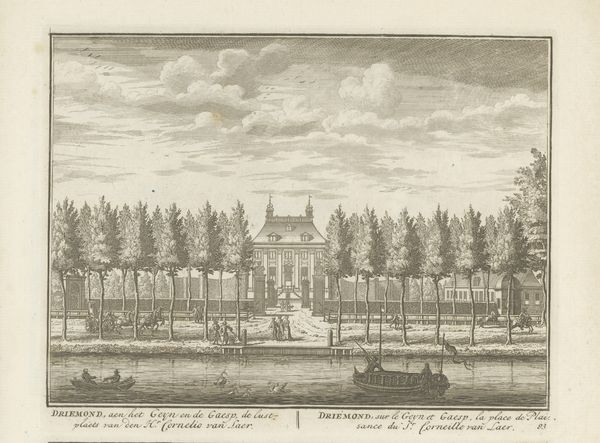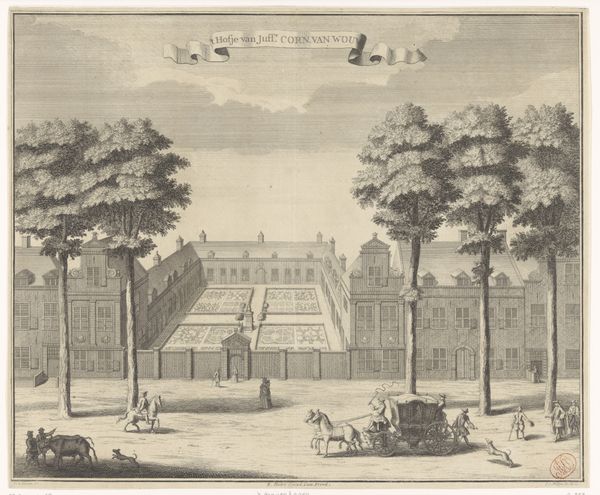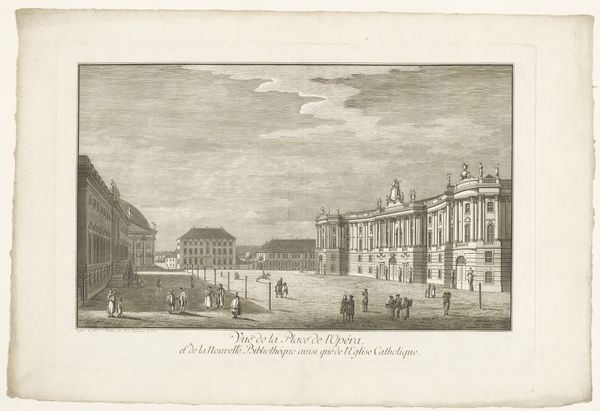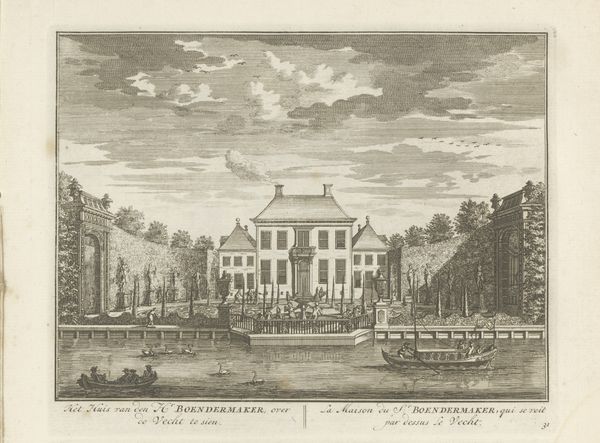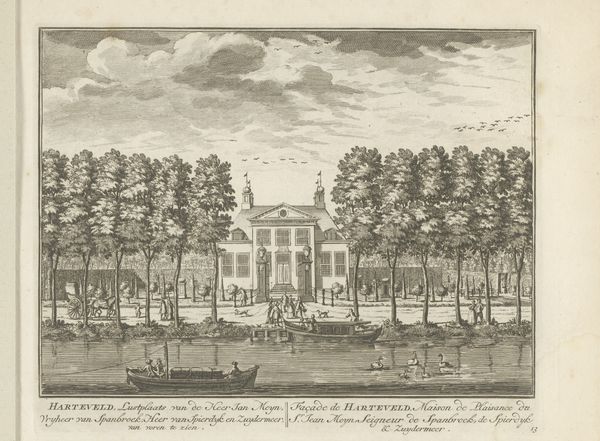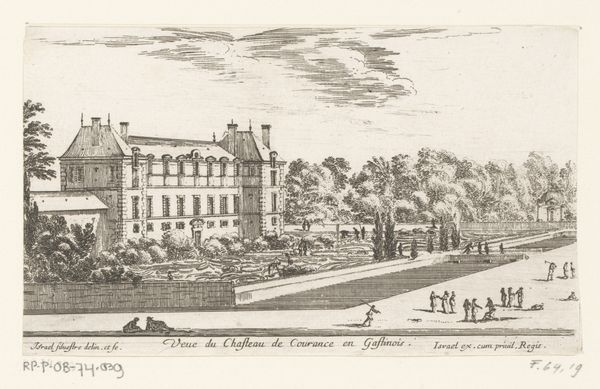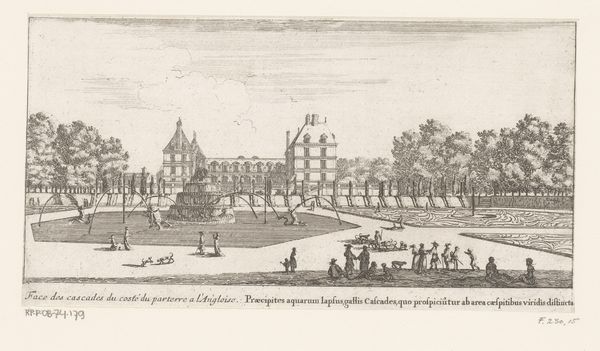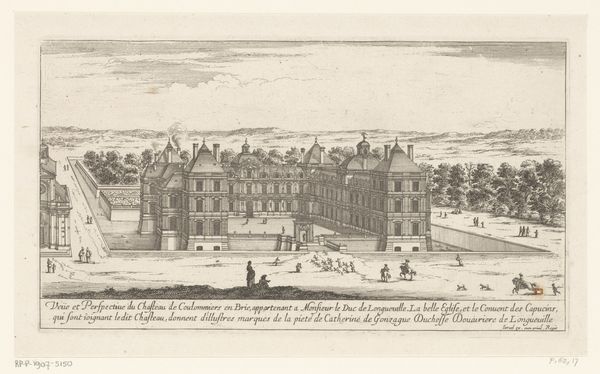
plein-air, engraving, architecture
#
neoclacissism
#
plein-air
#
landscape
#
engraving
#
architecture
Dimensions: height 164 mm, width 201 mm
Copyright: Rijks Museum: Open Domain
Curator: Well, hello there! Take a gander at "Gezicht op de tuin van de buitenplaats Driemond", which roughly translates to "View of the garden of the Driemond estate." It's an engraving by Daniël Stopendaal from around 1790, now residing in the Rijksmuseum. Editor: It feels incredibly staged. A rather rigid depiction; everything is so meticulously ordered and placed. It's quite serene in its geometry. Curator: Exactly. Stopendaal captures this formal garden with a striking emphasis on geometric design. Think about the social context: the aristocracy sought to showcase their control over nature and, by extension, society itself. Engravings such as this would have served as promotional material as well. Editor: So, in examining this piece, what exactly were the social circumstances for production of luxury items during that era? Because looking at the materials alone, it would have been a relatively common product, but the image it carries transforms that engraving into so much more than paper and ink. Curator: True, engraving itself was a well-established reproductive method, making images more widely available. This allowed for broader dissemination of architectural trends and the idealisation of estate living to a growing middle class. It wasn’t simply a means to record information, but helped cement the ideology of land ownership, hierarchy and class aspirations. The piece’s meticulous labor reinforces those hierarchies, by the way. Editor: And who consumed images like this, and how did that influence their perceptions of power? Did viewing these immaculate estates generate envy? Curator: The distribution networks and points of access undoubtedly determined audience interpretation and its impact. Likely clients for these types of images would have been aristocrats themselves, or wealthy merchants attempting to emulate aristocratic ideals in order to claim political standing. But what about this almost austere style? Editor: Well, you do notice a subtle return to neoclassicism during this time. Landscape depictions were moving towards rational, structured depictions; like the people shown enjoying themselves without being overly chaotic. And while neoclassicism is interesting in its own right, engravings tend to hide their material production processes compared to other printing methods of the era. Curator: Perhaps this concealment is intrinsic to neoclassical ideas of presenting idealized visions! The act of creating that controlled ideal becomes nearly invisible... very interesting. Editor: So true, the layering of social and material observations truly creates an experience greater than merely observation.
Comments
No comments
Be the first to comment and join the conversation on the ultimate creative platform.
